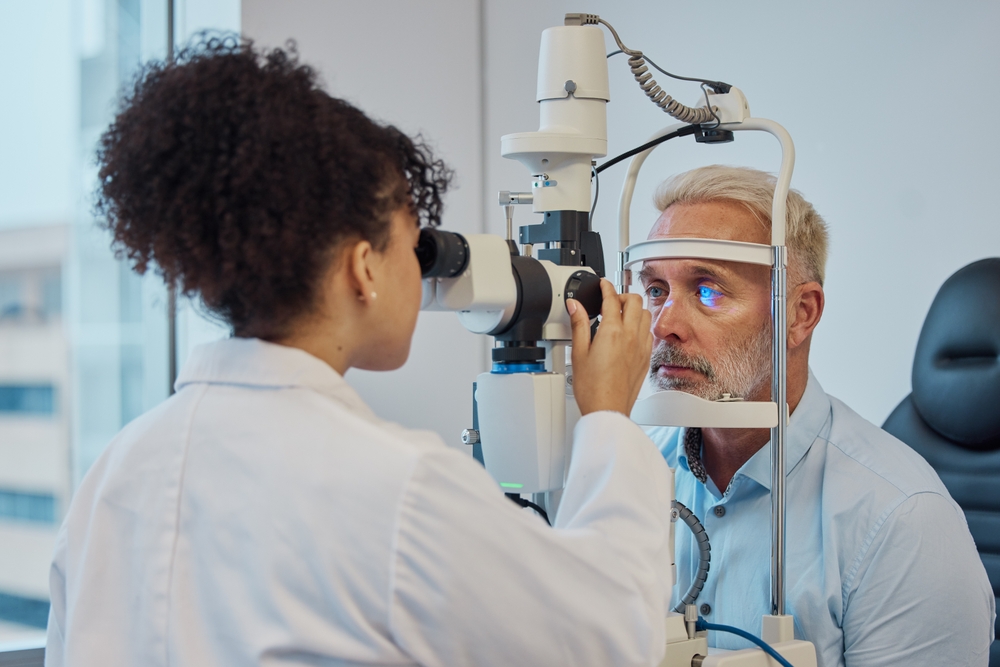How Is Geographic Atrophy Different from AMD?

Age-related macular degeneration (AMD) is a common eye condition that can significantly impact vision, especially among older adults. Within the spectrum of AMD, geographic atrophy (GA) represents an advanced form that requires particular attention. Understanding how GA differs from other forms of AMD can help patients take a proactive approach to their eye health.
What Is AMD?
AMD is a degenerative eye disease that affects the macula, the central part of the retina responsible for sharp vision. It comes in two primary forms:
Dry AMD: The more common form, caused by the gradual thinning of the macula and the accumulation of drusen (tiny protein and lipid deposits).
Wet AMD: A less common but more severe form, characterized by abnormal blood vessel growth beneath the retina, which can lead to sudden vision loss.
What Is Geographic Atrophy?
Geographic atrophy is an advanced stage of dry AMD, marked by the progressive loss of retinal cells in well-defined areas. Over time, these patches of retinal cell loss grow, leading to significant vision impairment. GA accounts for about 20% of legal blindness cases in the U.S. and is a major cause of vision loss in AMD patients.
Key Differences Between Geographic Atrophy and AMD
Geographic atrophy (GA) is an advanced form of dry age-related macular degeneration (AMD) and differs significantly from both early AMD and the wet form of the condition. Dry AMD progresses slowly, with thinning of the macula and drusen buildup, while wet AMD involves abnormal blood vessel growth under the retina, often causing sudden vision loss. GA, however, is marked by the gradual and irreversible loss of retinal cells in specific areas, leading to permanent blind spots (scotomas).
The progression of GA is slower than wet AMD but more advanced than early dry AMD. Over time, areas of atrophy expand, causing increasing difficulty with central vision tasks like reading and recognizing faces. Symptoms of GA often include blind spots, reduced night vision, and trouble adapting to low-light environments, setting it apart from the wavy or distorted vision seen in wet AMD.
Treatment options also vary. While wet AMD has effective anti-VEGF injections, dry AMD and GA lack definitive cures. Lifestyle changes, nutritional supplements, and emerging therapies aim to slow progression and preserve vision. Understanding these differences is crucial for effective management and preserving quality of life.
Diagnosis and Monitoring
Detecting geographic atrophy early is critical for managing its progression. Regular eye exams, including optical coherence tomography (OCT) and fundus photography, allow eye doctors to monitor retinal changes and identify GA.
At Quality Eye Care, we use advanced diagnostic tools to detect and track AMD and geographic atrophy. Routine check-ups ensure we can provide timely guidance tailored to your needs.
Take Control of Your Eye Health
Understanding the differences between geographic atrophy and other forms of AMD is vital for effective management and maintaining vision. By staying informed and working closely with your eye doctor, you can take charge of your eye health and preserve your quality of life for as long as possible.
Schedule your comprehensive eye exam with Quality Eye Care to protect your vision and learn more about managing AMD and geographic atrophy effectively. Contact our office in Jacksonville, Florida, by calling (904) 601-1300 to book an appointment today.







